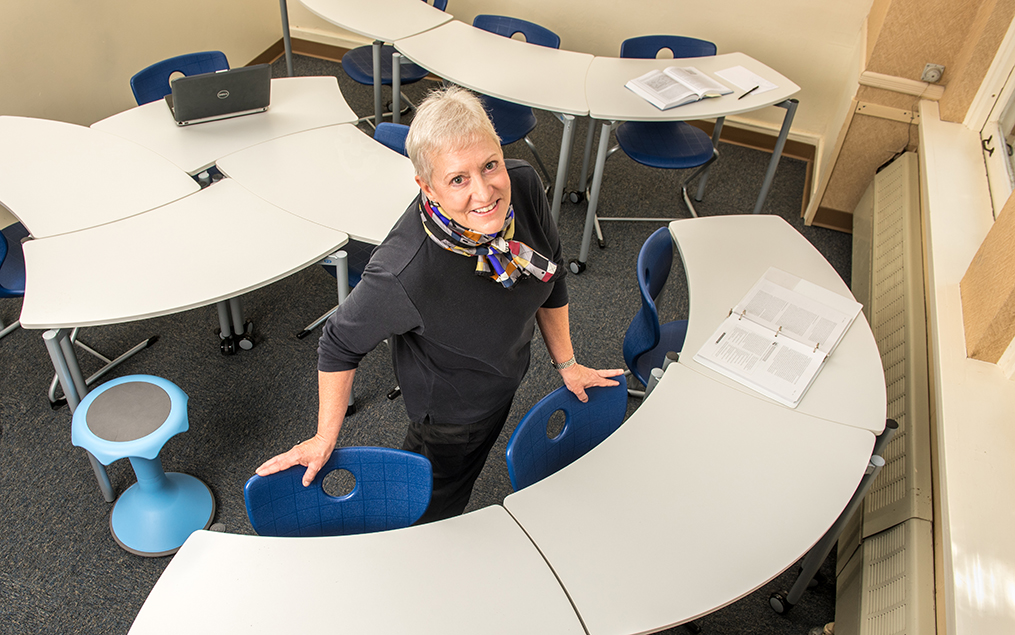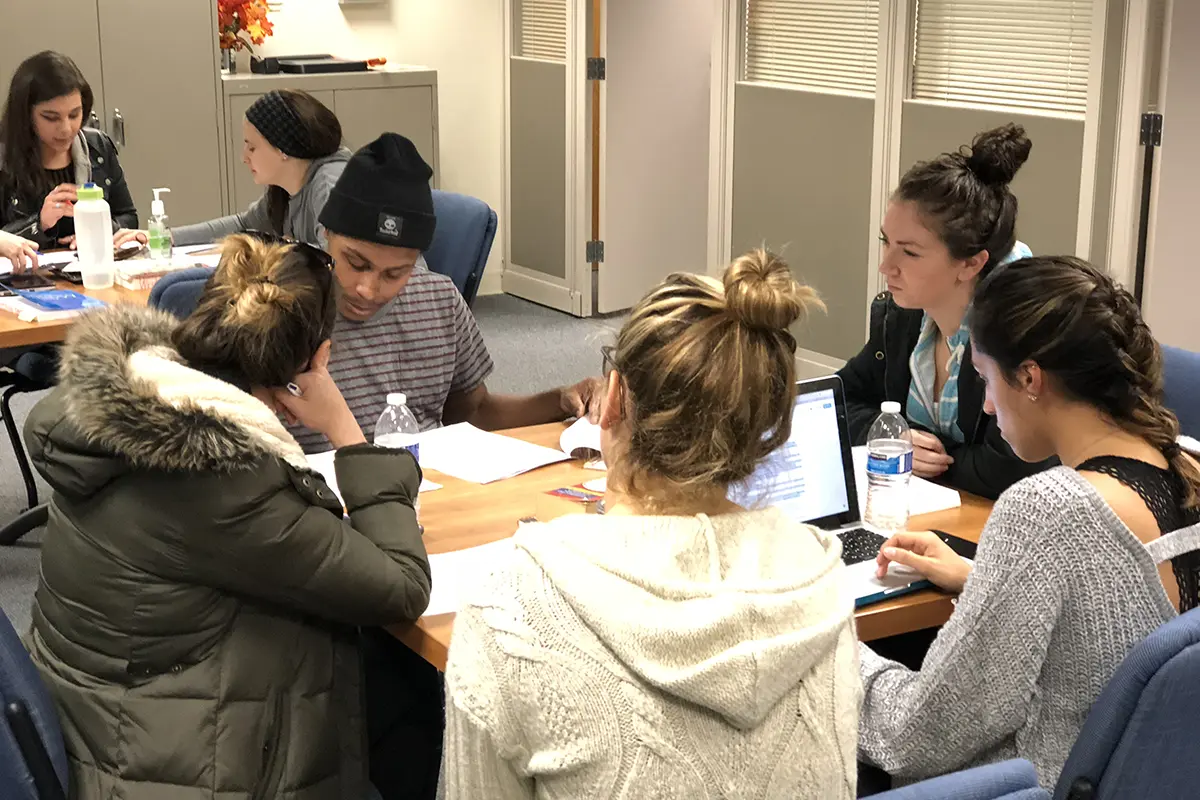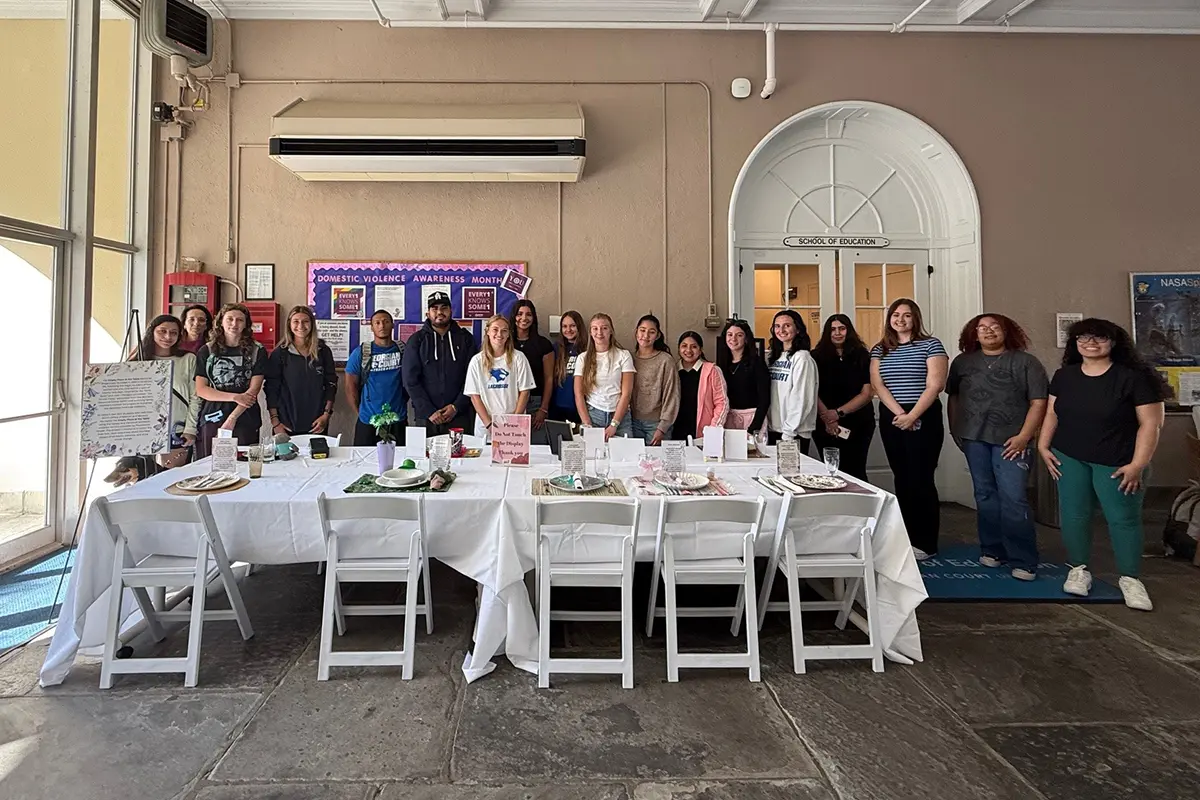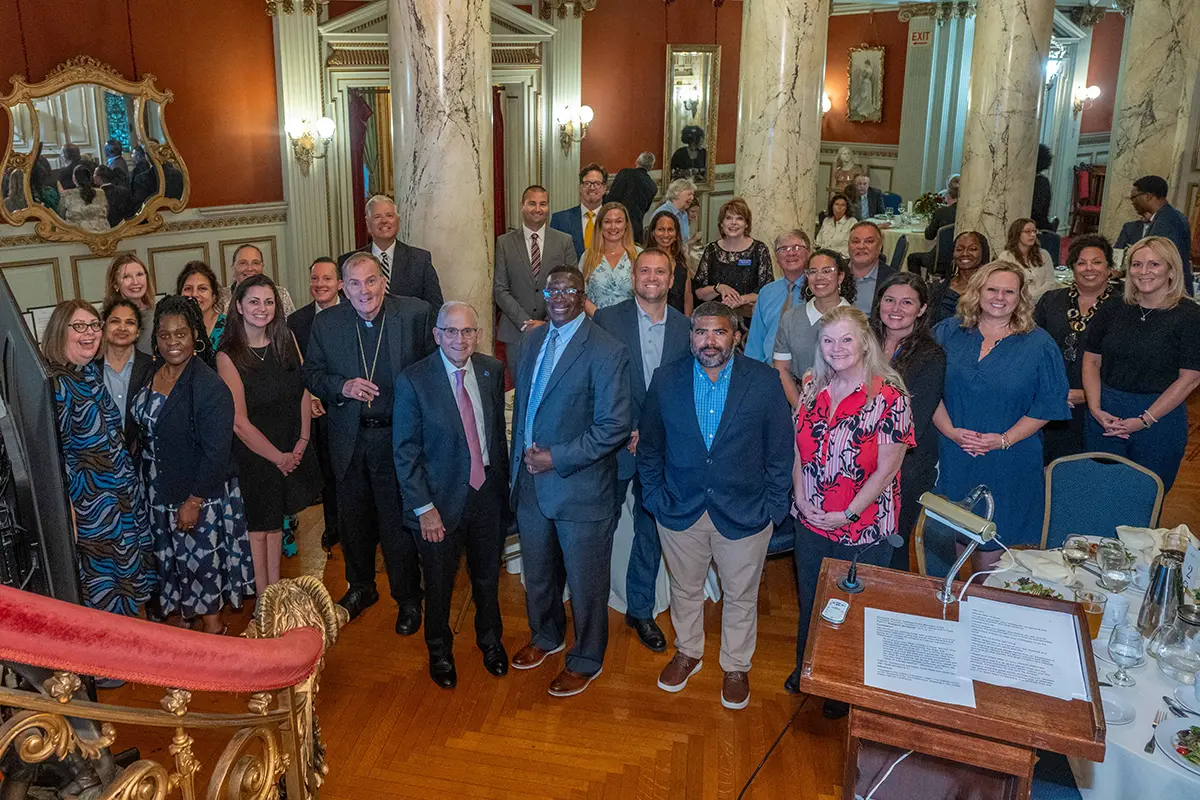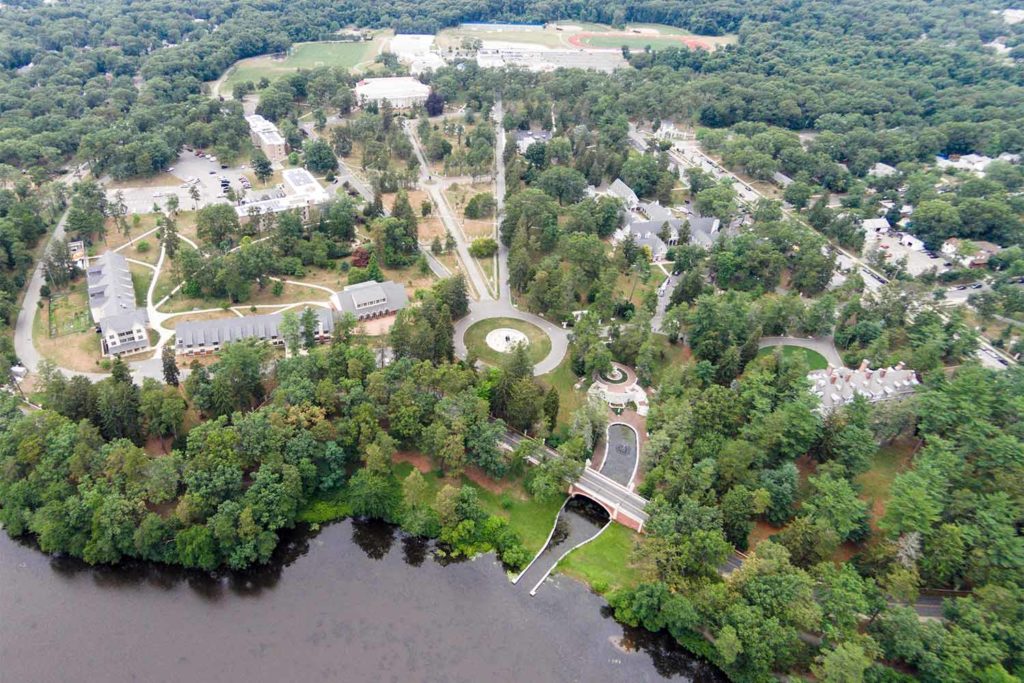Claire Gallagher, Ed.D., Professor of Education
Photo: Russ DeSantis
When Claire Gallagher, Ed.D., looks at a classroom, she sees more than desks and chairs. As an architect and an educator, the Georgian Court University professor of education sees an opportunity to help more students learn.
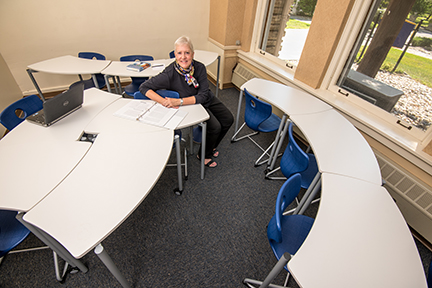
The autocratic school design of the last few hundred years is increasingly a thing of the past, Dr. Gallagher says. “In general, schools are being designed for student-focused, student-driven learning,” she says.
What does that look like? Learners have choices of places to go within a classroom, where they can sit or lie down during the lesson. Adjacent classrooms allow teachers and students to have access together to form groups or learn together. Some schools literally increase transparency with more glass-walled rooms and walls that can be moved so that the classroom is both indoors and outdoors, taking advantage of school settings with beautiful natural areas.
Dr. Gallagher applies her creative approach to teaching and learning in her ongoing work with Georgian Court alumna Beth Topinka, a science teacher and director of science, technology, engineering, art and mathematics (STEAM) at Millstone Elementary School in Millstone, New Jersey. Dr. Gallagher has been a mentor to Ms. Topinka since the teacher studied at Georgian Court. She says Topinka’s integration of new science standards is a great example of the power of new approaches to learning. Ms. Topinka and her third- and fourth-graders won a national problem-solving award for their work with invasive grasses—a topic she also explored with GCU biology professor Louise Wootton, Ph.D.
Beyond GCU and New Jersey, Dr. Gallagher is walking her talk about the evolution of classrooms. As chair of the Committee on Architecture for Education of the American Institute of Architects, she’s involved in lobbying Congress to impress upon them that school design is a critical part on learning—and one that must be considered as we look at building communities. She has also worked with the Academy of Neuroscience for Architecture and the neuroaesthetics project of the Brain Science Institute at Johns Hopkins University.
“Part of the advocacy on Capitol Hill is to change the definition of infrastructure in this country to include schools, public buildings, libraries, and other buildings where Americans spend time and learn,” she says.
Dr. Gallagher believes that classroom design will be more integrative in the future—and that’s a good thing for learners. Just as computers are now common in classroom settings instead of relegated to a “computer room,” classrooms will begin to integrate other learning tools from various disciplines to help all learners grasp a broader variety of subject matter. She says that “maker spaces,” where students can integrate 3D printing and create things with their hands are the next big thing.
“Advocating for equity in children’s access to well-designed schools—designed to resonate with pedagogy and resulting in positive changes in teaching and learning—is my goal, as well as increasing awareness of what is possible rather than what has been,” she says.
Dr. Gallagher is one of many faculty members who are also teaching courses at GCU@Hazlet, Georgian Court’s partnership program with Brookdale Community College that offers bachelor’s degrees in business administration, English, interdisciplinary studies, psychology, and a teacher certification program.
This article also appears in Faculty Focus 2017, Georgian Court’s report of faculty scholarship and creative activity. Story contributed by Gwen Moran.

